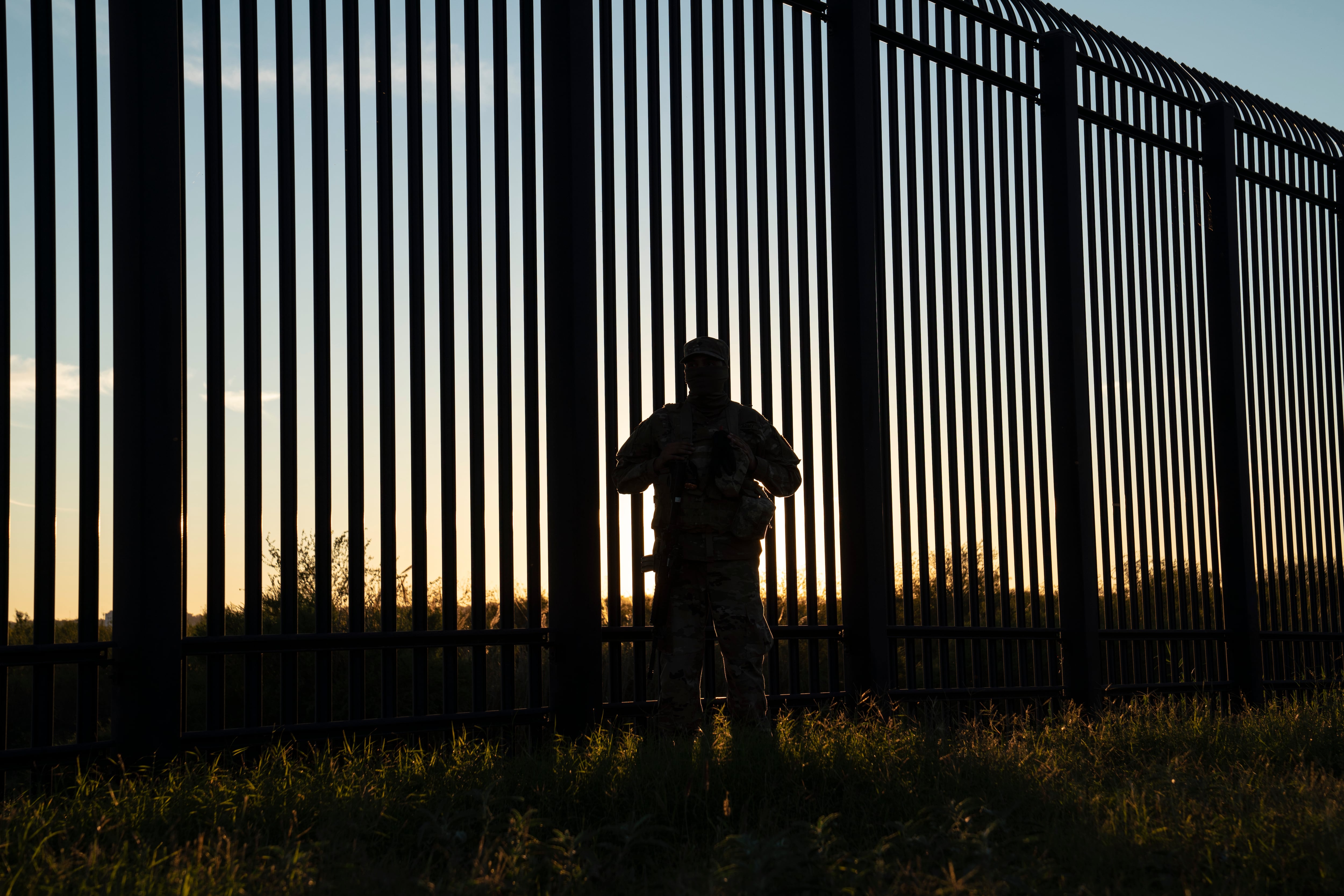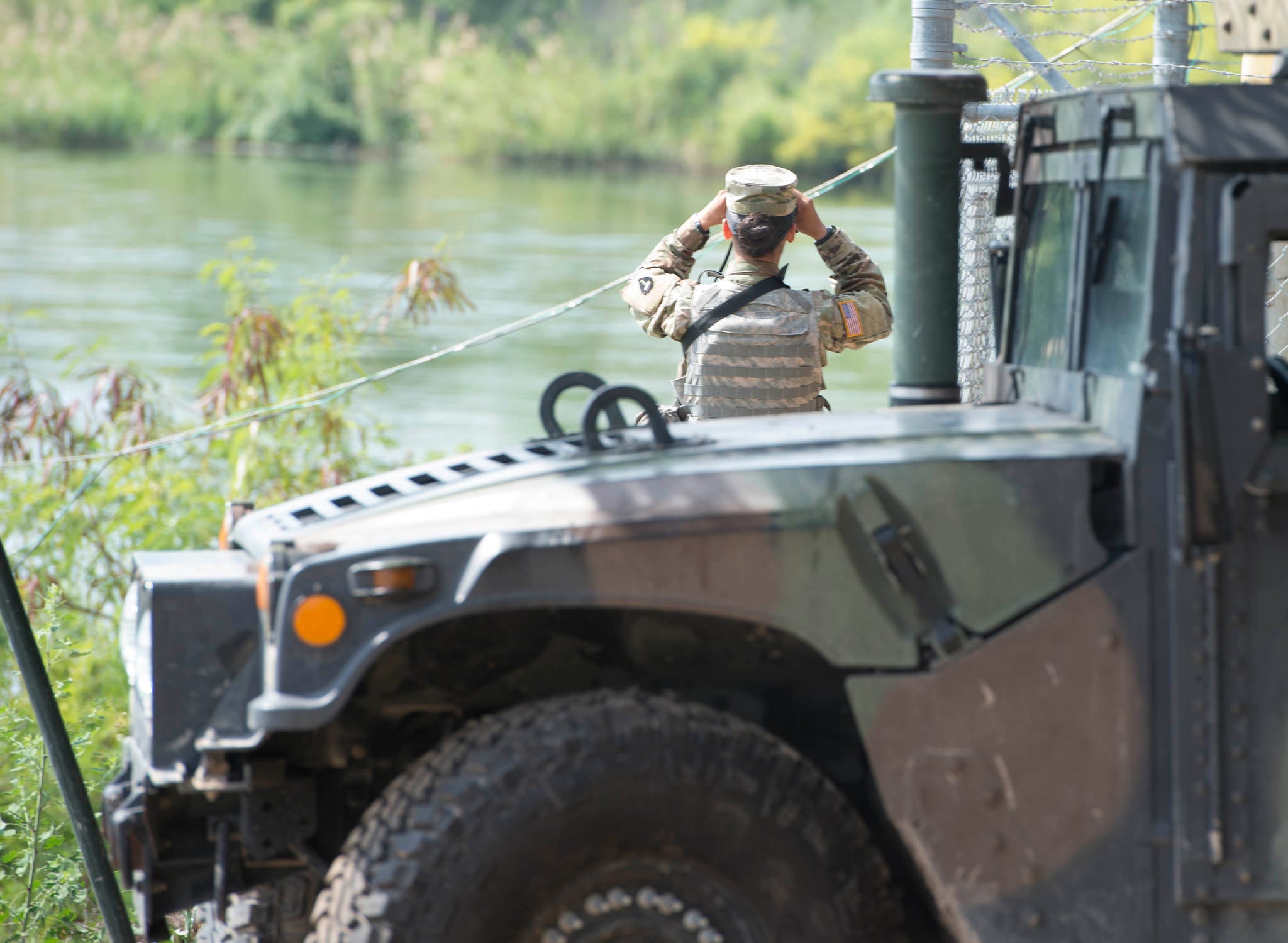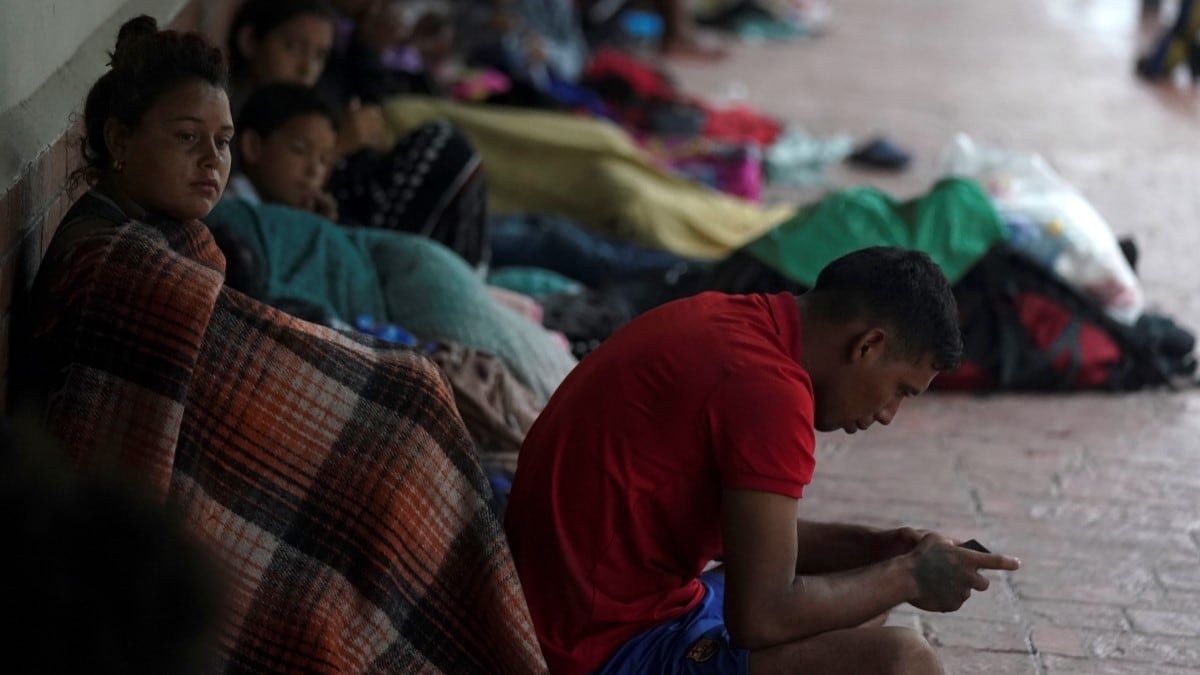Approximately 550 Marines from bases in California and North Carolina are heading to the southern border amid the end of pandemic-era immigration restrictions.
The Marines are part of a group of approximately 1,500 active duty troops getting deployed to the U.S.-Mexico border after the end of a policy that authorized U.S. officials to return migrants over the border quickly. The troops will arrive no later than June 1, Lt. Col. Rob Shuford, a Marine spokesman, said in a statement to Marine Corps Times.
The Marines will help the Department of Homeland Security and Customs and Border Patrol “with data entry, warehousing support, and additional detection and monitoring support efforts” at the western part of the southern border, Shuford said.
Around 350 Marines will come from 2nd Marine Division and Combat Logistics Battalion-2, based at Camp Lejeune, North Carolina, Shuford said.
RELATED

The approximately 200 remaining Marines will come from 1st Marine Division, based in Camp Pendleton, California. Camp Pendleton is located near San Diego, so it’s not far from the border with Mexico.
This won’t be the first time that Marines have deployed to the southern border.
In 2018, approximately 1,100 Marines from Camp Pendleton’s I Marine Expeditionary Force deployed to support civilian agencies at the southern border as a caravan of Central American migrants moved north through Mexico, the U.S. Naval Institute reported at the time. The Marines’ responsibilities included providing transportation and housing support, putting up barbed wire along border walls, and command and control.
RELATED

In 2014 and 2015, Marine engineers from Camp Pendleton, California, headed to the border to improve roads “to basically provide better mobility for the Border Patrol ground forces to counter narcotic trafficking for homeland security,” as a mission commander put it.
In 1997, the Marines’ presence at the border ended in a high-profile tragedy. Heavily camouflaged Marines on an antidrug mission shot and killed American high school student Esequiel Hernandez Jr., 18, after he apparently shot in their direction with a rifle he was using to protect his goats from wild dogs, The New York Times recounted in 2018.
Hernandez’s death has left lasting wariness of troops in some Texas border communities, and those with concerns about domestic military deployments have continued to raise it as a cautionary tale. But the 1997 mission was far different in terms of goals and tactics from the more recent ones meant to stave off increases in immigration.
Homeland Security first announced the deployment of troops May 2 but didn’t provide specifics about which units would be sent.
“DoD personnel have never, and will not, perform law enforcement activities or interact with migrants or other individuals in DHS custody,” the Homeland Security statement about the deployment of troops read. “This support will free up DHS law enforcement personnel to perform their critical law enforcement missions.”
Elements from the Army’s 93rd Military Police Battalion, 89th Military Police Brigade, based at Fort Bliss, Texas, also are deploying to the border, according to a May 5 Northern Command news release. A small number of airmen also will deploy for this mission, the release stated.
Approximately 2,500 National Guardsmen are already at the border as part of a preexisting mission.
The impetus for the deployment of troops in support of the Department of Homeland Security is the end of Title 42, an emergency health authority that allowed U.S. officials to turn away migrants who came to the U.S.-Mexico border on the grounds of preventing the spread of COVID-19. It was a holdover from President Donald Trump’s administration and began in March 2020.
President Joe Biden initially kept Title 42 in place after he took office, then tried to end its use in 2022. Republicans sued, arguing the restrictions were necessary for border security. Courts had kept the rules in place. But the Biden administration announced in January that it was ending national COVID-19 emergencies, and so the border restrictions have now gone away.
New rules strip away that ability to simply expel asylum seekers but add stricter consequences to those not going through official migratory channels. Migrants caught crossing illegally will not be allowed to return for five years and can face criminal prosecution if they do.
After a surge of migrants entered the United States in the lead-up to the end of Title 42 on Thursday night, border crossings have since dropped.
The Associated Press contributed to this report.
Editor’s note: This article was updated Thursday with additional information about the Army and Air Force troops deploying to the border.
Irene Loewenson is a staff reporter for Marine Corps Times. She joined Military Times as an editorial fellow in August 2022. She is a graduate of Williams College, where she was the editor-in-chief of the student newspaper.





